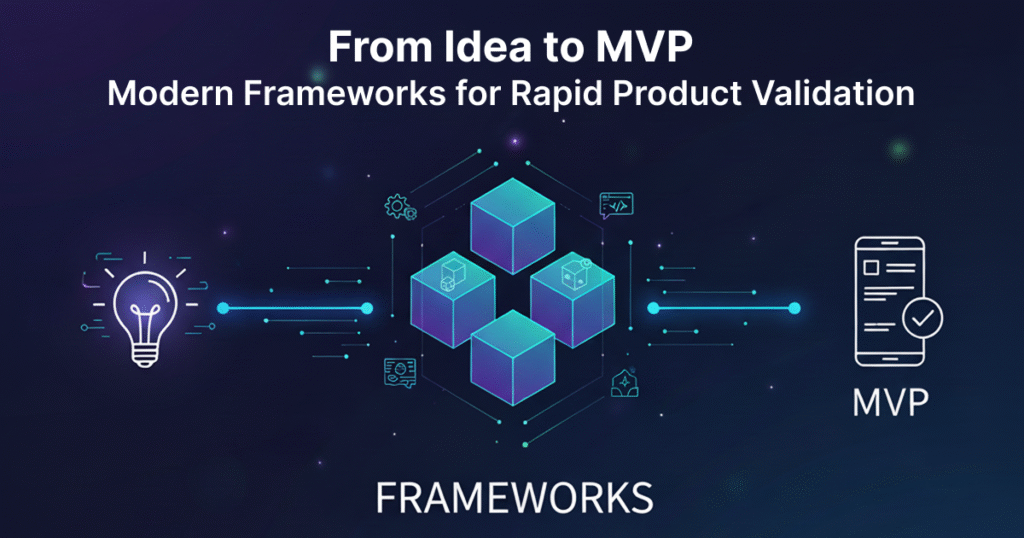It’s exciting, isn’t it? And it’s almost frightening how quickly that idea can grow — and how protective you come to be of it. In fact, for most people, a new business idea is more like a baby than a seed — a precious baby, brimming with immeasurable potential. It is indeed hard to not let a new business idea become your baby. After all, you devote hours of your time to nurturing it, agonizing over the perfect name, and perhaps even feeding it with your own money. So, it is important to starting off on the right foot.
An idea can be a brand new seed-funded business, an innovative product in an existing corporation, a venture project in the innovation lab, etc. No matter which best describes your idea, they all have one thing in common — at the beginning, there are a lot of unknowns, and so there will be a lot of assumptions on how to design and scale the business model.This emphasizes the importance of validating your assumptions early on.

What is an MVP?
A Minimum Viable Product is usually the product’s first functioning pilot version with a basic feature set. MVPs are built quickly and without many resources to test hypotheses and obtain valuable insights early in the development lifecycle.
What is product validation?
Product validation is a phase where you confirm that consumers are interested in your product idea. It tests for:
Problem-solution fit – Does it solve a burning pain?
Willingness to pay – Will prospects hand over money?
Scalable demand – Is the market big enough to grow?
Why is product validation important?
Most ventures don’t get the luxury of a second launch. When your bet misses the mark, the consequence is losing real money.
Validation helps you find demand on a budget, pivot early if numbers are weak, and conserve the money (and morale) you’ll need to scale. Beyond upfront costs, it also helps you understand product liability before customers start using your product.
Why are frameworks required?
Digital product frameworks are essential for guiding the development and management of an idea, ensuring they meet user needs, are technically feasible, and align with business goals. Here are some key frameworks commonly used in the development and lifecycle management of an idea
4 frameworks for validating ideas
There are many frameworks and methodologies that incorporate this concept and enable entrepreneurs to validate ideas. The most “high-level” and well-known are those that tend to interrelate and are usually influenced by one another. For example, Lean Startup was greatly inspired by Customer Discovery, while Google Design Sprints make use of principles found in Design Thinking and Lean Startup.
Here’s a brief rundown of these major frameworks.
Lean Startup
This idea validation framework puts its emphasis on validated learning and getting your priorities right at the start. When you focus on identifying the right thing to build (what customers want and will pay for), you don’t need to spend months waiting for a product beta launch to change the company’s direction. Instead, entrepreneurs can adapt their plans incrementally, as time and circumstances demand it.
Customer Development
Created by Steve Blank, the Customer Development framework is all about gathering evidence to test hypotheses, gaining a deep understanding of customer problems, and validating the solutions you come up with.
Design Thinking
This is the “test” idea validation stage, which employs a wide range of methods. Testing may be conducted throughout the progress of a Design Thinking project. However, it is most commonly performed at the same time as the prototyping stage. In all cases, the end goal is to design a solution that satisfies the tests of desirability, feasibility, and viability.
Google Design Sprints
Google Design Sprint is a Design Thinking method, consisting of a time-constrained, five-day process for answering critical business questions through design, prototyping, and testing ideas with customers. The sprint gives teams a shortcut to learning without having to build or launch a Minimum Viable Product.
Search
Categories

Author
-
Inbarasu leads project co-ordination at Brigita. He draws insights from years of experience serving as a tester & project coordinator. He has experience in using Jira for planning projects, assigning tasks, and creating roadmaps to visualize project progress in Agile project management. He’s driven to share his expertise with other technology leaders to help them build great teams, improve performance, optimize resources, and create foundations for scalability. Outside of work, he is a fan of all sports, particularly cricket, listening to music & a fitness enthusiast.
